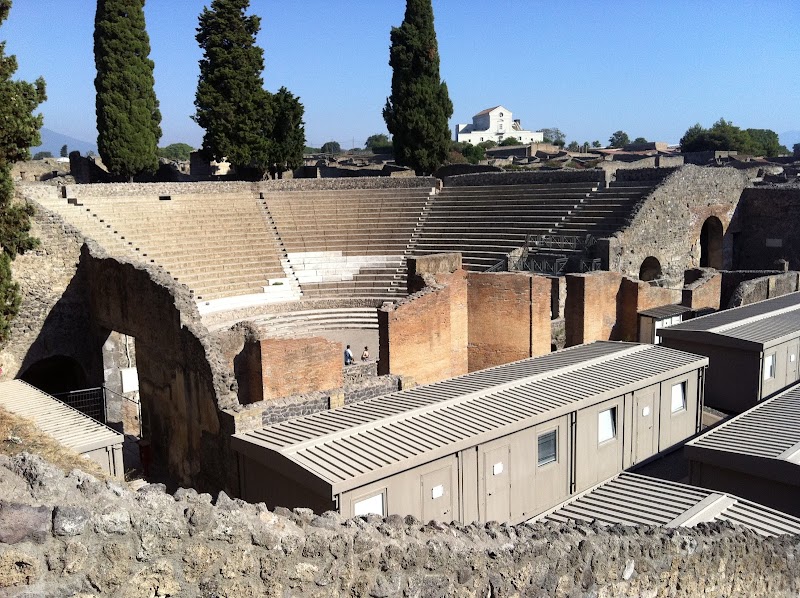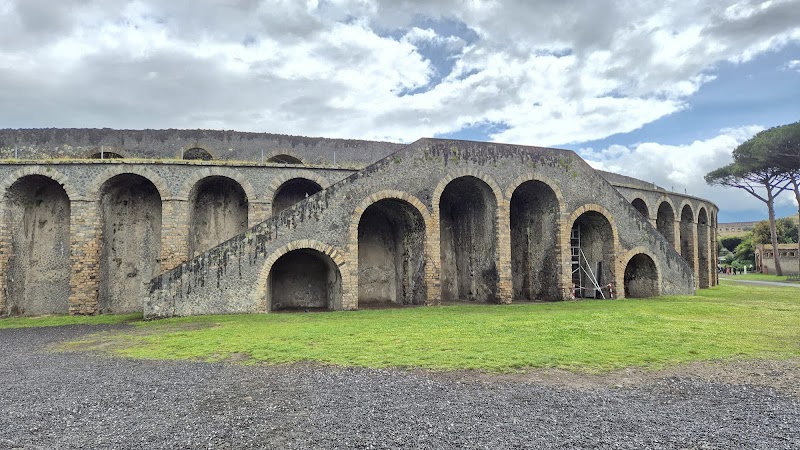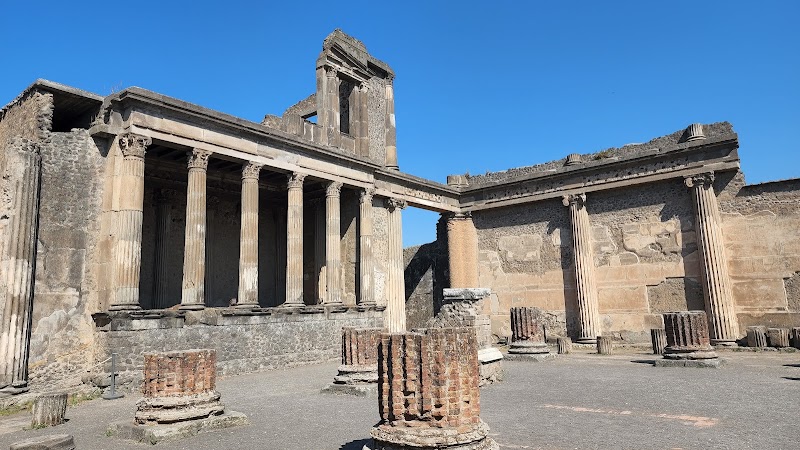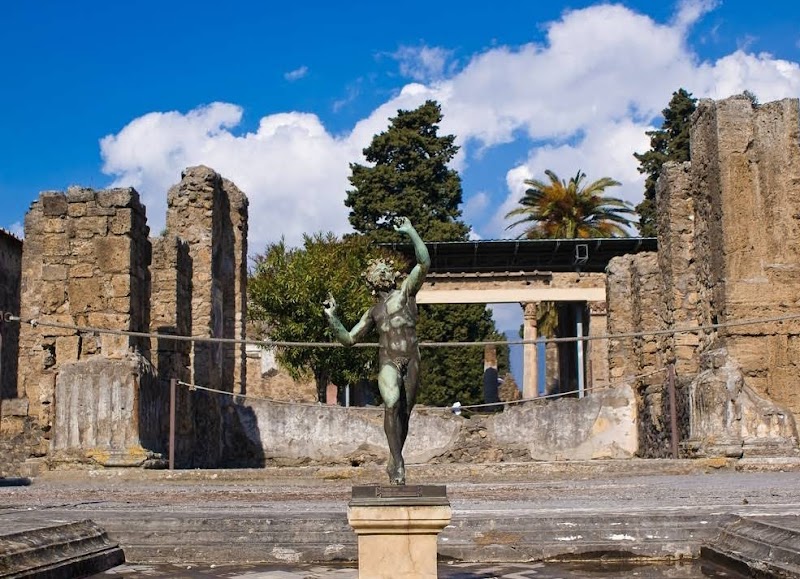Embark on a historical journey through the once bustling city of Pompeii, a UNESCO World Heritage site that gives a unique insight into the ancient Roman civilization. This city, once engulfed by the ashes of the mighty Mount Vesuvius, is now one of the most popular archaeological sites in Italy. Stroll through the ancient streets, admire the richly decorated villas, and take in the magnificent view of the looming Mount Vesuvius.
For a seamless trip to this intriguing destination, we recommend you to use a tourist map. This map will act as a trusted guide, leading you through the depths of Pompeii's history and ensuring you don't overlook any historical gems. With the map in your hands, you can explore the city at your own rhythm, soaking in the vestiges of a bygone era.
" Booking.comDelving into the Historical Treasures of Pompeii
Pompeii, being one of the most visited archaeological sites in Italy, promises a world full of historical wonders. Every nook and cranny of this ancient city offers a unique glimpse into a civilization that was abruptly ceased by the eruption of Mount Vesuvius. From its intricately designed villas and ancient streets that resound with the tales of yesteryears, each step you take in Pompeii is like a walk through history.
Exploring the Archaeological Marvels
Pompeii's villas and ancient streets capture the limelight, but the city is also home to several archaeological masterpieces that offer remarkable insights into Roman life. The Grand Theatre (Teatro Grande), for instance, is a grandiose structure that once accommodated 5,000 spectators and still hosts performances today. Nearby, you'll find the Quadriportico dei Teatri, a striking four-sided colonnade that probably served as a training ground for gladiators. These spots provide a rare glimpse into the entertainment culture of ancient Rome, making them unmissable spots on your tourist map of Rome.
Uncovering the Sacred Sites
At the heart of Pompeii, you'll encounter a cluster of sacred sites that narrate the story of Roman religious practices. The Temple of Apollo, one of the city's oldest religious edifices, displays a fusion of Greek and Roman architectural styles. A short distance from the temple, the Forum Baths offer a peek into the Romans' public bathing culture, featuring separate sections for men and women, and intricate frescoes that have stood the test of time. A tour of these sites will enrich your understanding of the deep-seated religious and social customs of the era.
Stepping into Pompeii's Residential Life
For a more intimate glimpse into Roman life, make your way to Pompeii's residential zones. The House of the Vettii, a well-preserved villa that once belonged to affluent merchants, is a prime example of residential architecture, boasting a central courtyard encircled by opulent rooms adorned with breathtaking frescoes. Nearby, the House of the Faun presents a contrast with simpler designs and a famous mosaic depicting the battle of Alexander the Great. Each of these residences, unique in their own right, paint a vivid picture of domestic life in Pompeii.
Experiencing Pompeii's Street Life
For an immersive experience of Pompeii's everyday life, take a stroll down the Via dell’Abbondanza, the city's main thoroughfare. Lined with shops and cafes, this bustling street was once the epicenter of Pompeii's social and economic activity. This lively street leads to the Forum, the city's central square, which was a hotspot for political, religious, and commercial gatherings. Step back in time as you walk down this vibrant street, using your tourist map of Naples to navigate your way.
Appreciating Pompeii's Artistic Excellence
A trip to Pompeii would be incomplete without admiring the artistic prowess of the ancient Romans. Inside the Villa of the Mysteries, you'll discover one of the most comprehensive and well-preserved frescoes from antiquity, depicting a mysterious initiation ceremony. As you marvel at the artistry, you'll be reminded of the rich cultural heritage that Pompeii continues to uphold, making every visit a journey of discovery and enlightenment.

Pompeii: Practical Information
Transportation and Mobility
Getting to Pompeii is easy with Italy's well-connected transportation network. The Circumvesuviana train operates regular services between Naples and Sorrento, stopping at Pompeii Scavi-Villa dei Misteri station. If you're stationed in Rome, you might want to take a high-speed train to Naples and then board the Circumvesuviana. Alternatively, SITA buses operate from Naples and Sorrento to Pompeii.
Keep in mind that Pompeii is a large site and involves a considerable amount of walking. Comfortable shoes are a must. Electric minibuses are also available for those who need assistance with mobility.
Timings and Prices
Pompeii is open to visitors from 9 am to 7 pm in the summer (April-October), with the last entry at 6 pm. During winter (November-March), it closes at 5 pm, with the last entry at 3:30 pm. It's best to visit Pompeii early in the morning or later in the afternoon when the crowds are smaller.
As for the admission fees, the standard ticket costs €15, while a discounted rate of €2 is applicable for EU citizens aged 18-25. Children and teenagers under 18 and people with disabilities and their caregivers can enter for free.
Safety Guidelines
Pompeii is generally a safe destination, but as with any tourist place, it's important to stay vigilant. Remember to stay hydrated, especially during the hot summer months, and apply ample sunscreen. As the site is vast, it's easy to lose your way, so keep track of your location and time to avoid being in the park after closing hours.
Practical Tips
Planning your visit in advance can help you make the most of your Pompeii experience. Check the weather forecast before your visit, as the site may close in extreme weather conditions. Also, bear in mind that there's limited shade in Pompeii, so it's advisable to wear a hat and sun protection.
Lastly, please respect this ancient site and adhere to all posted rules and guidelines. This includes staying on designated paths, refraining from climbing on ruins, and not touching artifacts. With these practical tips, you're all set for an unforgettable trip to Pompeii!

Frequently Asked Questions about Pompeii
Q1: Can I participate in archaeological digs in Pompeii?
While Pompeii is a protected UNESCO World Heritage Site, some organized tours offer the unique experience of participating in supervised archaeological activities. However, these experiences are carefully controlled and require advance booking. Remember, it is both illegal and unethical to remove any artifacts from Pompeii.
Q2: Is Pompeii accessible for visitors with mobility challenges?
Despite the uneven cobblestone streets of ancient Pompeii, the site is making efforts to enhance accessibility. A special route, called the 'Pompeii for All' path, has been designed for visitors with mobility issues. However, it's recommended to check the latest updates on accessibility before your visit.
Q3: Is it possible to visit Pompeii and Mount Vesuvius in one day?
Yes, it is possible, but it would be a busy day. Both sites require a fair amount of time to explore in depth, so starting early is key. Many tour operators offer combined day trips that include both Pompeii and a hike up Mount Vesuvius. Don't forget to pack comfortable shoes, a hat, and plenty of water!
Q4: What is the best time to visit Pompeii to avoid crowds?
The best time to visit Pompeii is during the shoulder seasons of spring (April to June) and fall (September and October). During these months, the weather is pleasant and the crowds are typically smaller. Visiting early in the morning or late in the afternoon can also help avoid peak tourist times.
Q5: Are there any special events or festivals at Pompeii?
Yes, Pompeii regularly hosts cultural events, including summer concerts, exhibitions, and historical reenactments. These events offer a dynamic way to experience the ancient city under the stars. For the most current schedule, check the official Pompeii Sites website.
Q6: Are there any dining options within Pompeii?
While there are no restaurants within the archaeological site itself, there are several eateries and picnic areas just outside the entrance where you can enjoy a meal or a quick snack. Additionally, vendors selling water and soft drinks are available at the site. It's always a good idea to bring some snacks and water with you during your exploration.


